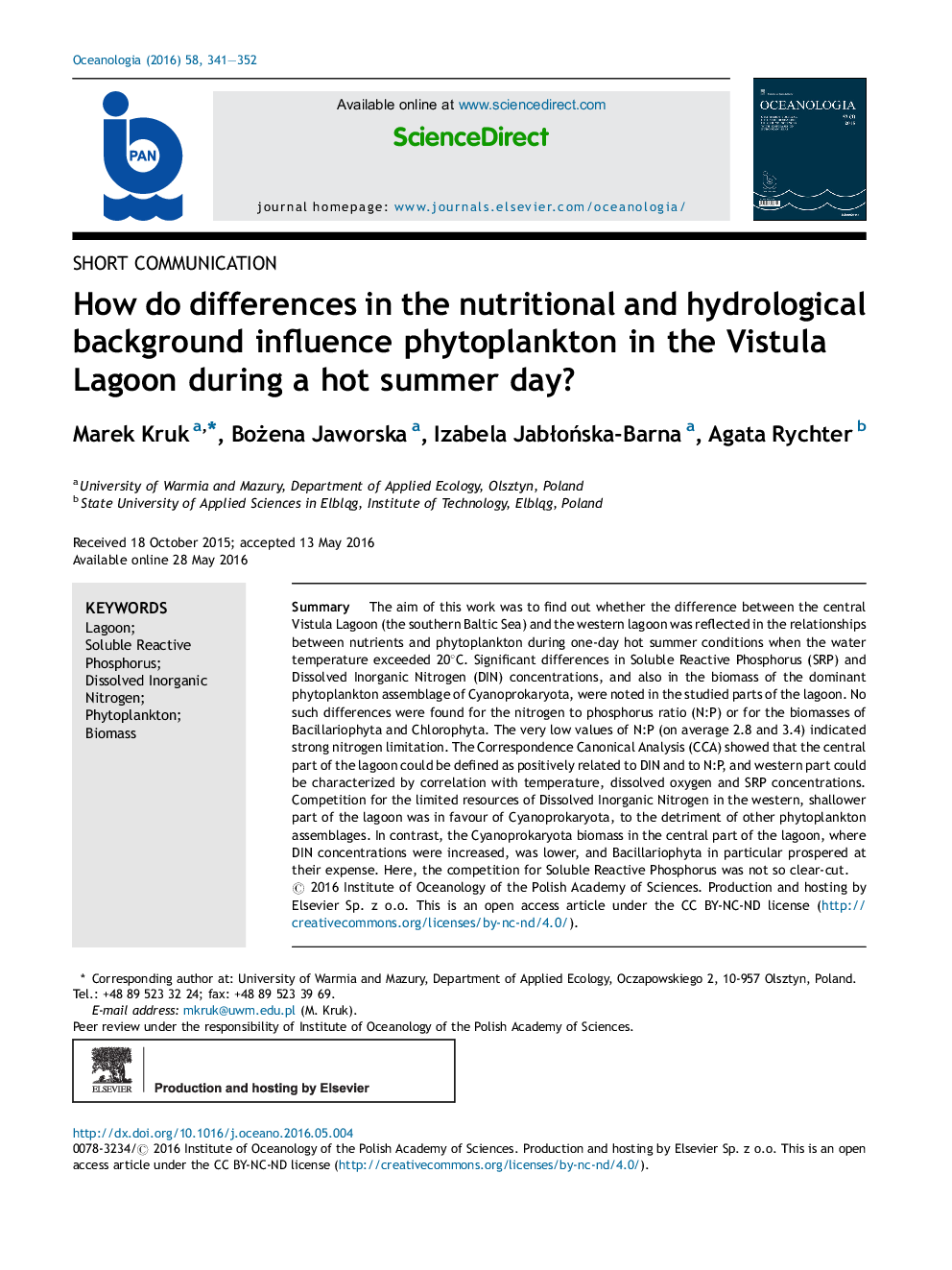| Article ID | Journal | Published Year | Pages | File Type |
|---|---|---|---|---|
| 5519745 | Oceanologia | 2016 | 12 Pages |
SummaryThe aim of this work was to find out whether the difference between the central Vistula Lagoon (the southern Baltic Sea) and the western lagoon was reflected in the relationships between nutrients and phytoplankton during one-day hot summer conditions when the water temperature exceeded 20°C. Significant differences in Soluble Reactive Phosphorus (SRP) and Dissolved Inorganic Nitrogen (DIN) concentrations, and also in the biomass of the dominant phytoplankton assemblage of Cyanoprokaryota, were noted in the studied parts of the lagoon. No such differences were found for the nitrogen to phosphorus ratio (N:P) or for the biomasses of Bacillariophyta and Chlorophyta. The very low values of N:P (on average 2.8 and 3.4) indicated strong nitrogen limitation. The Correspondence Canonical Analysis (CCA) showed that the central part of the lagoon could be defined as positively related to DIN and to N:P, and western part could be characterized by correlation with temperature, dissolved oxygen and SRP concentrations. Competition for the limited resources of Dissolved Inorganic Nitrogen in the western, shallower part of the lagoon was in favour of Cyanoprokaryota, to the detriment of other phytoplankton assemblages. In contrast, the Cyanoprokaryota biomass in the central part of the lagoon, where DIN concentrations were increased, was lower, and Bacillariophyta in particular prospered at their expense. Here, the competition for Soluble Reactive Phosphorus was not so clear-cut.
